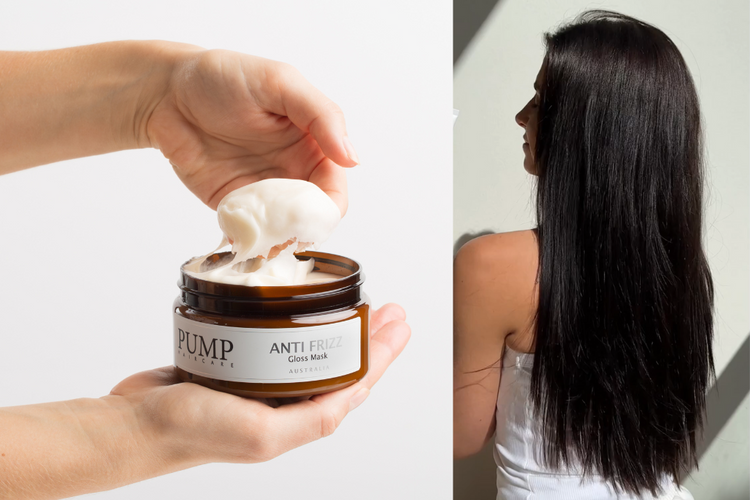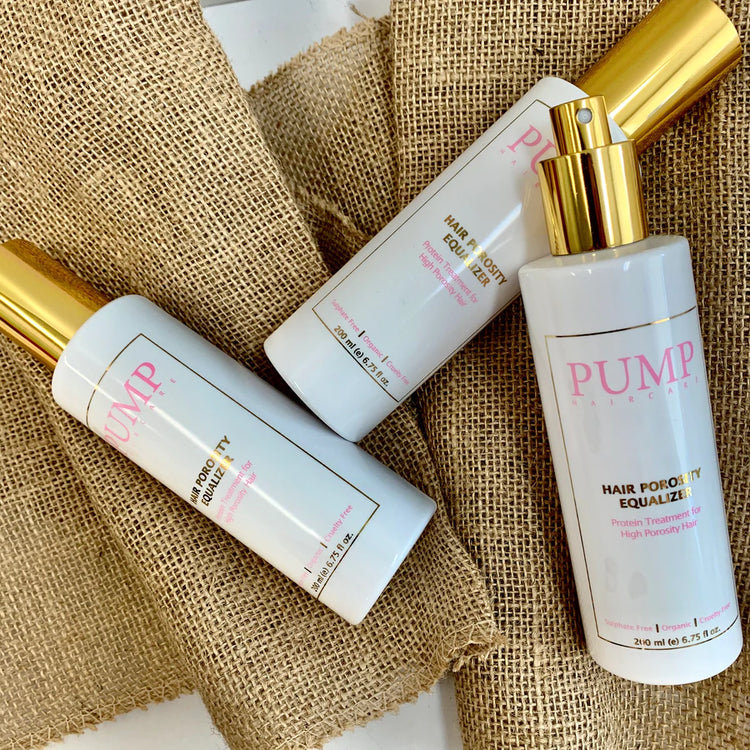Does your hair take a long time to dry with products often sitting on the surface, leading to product buildup? Or do you find your hair feels dry and brittle with water not absorbing? Chances are you have low-porosity hair. The good news is with the right hair products and hair care routine, you can help your hair to retain moisture and bring balance back into the hair shafts. In this blog, we will do a deep dive into what hair porosity is, how to test hair porosity as well as the steps you can take to combat low hair porosity.
What is Hair Porosity?
Hair porosity is marked by the hair shaft's ability to absorb and retain moisture. As a result, your hair will react differently to products and you will need a specific hair care routine to combat dryness. To determine your hair porosity, you can do an at-home hair porosity test to determine which hair porosity level you have: low, medium, or high.
Low Porosity Hair
Low hair porosity is classified by having a tightly compact hair cuticle which restricts moisture from entering the hair shaft. This causes hair products to sit on the surface, often leading to product build-up. Other characteristics include water not absorbing, chemical treatments requiring more time to take effect and slow drying time.
Medium Porosity Hair
Medium hair porosity finds itself in the middle, it can retain and absorb moisture well, making it the easiest to manage out of all hair types. With this porosity level, you can use a wide range of hair products. However, it is still important to incorporate a balanced hair care routine to keep your hair healthy.
High Porosity Hair
Having high hair porosity may seem like a good thing as it draws in moisture, however, it is unable to retain it. This is because the hair cuticle is open, making it susceptible to frizz and breakage. As a result, you should also be cautious to not overexpose your hair to sun or chlorine as it can severely damage the hair follicles.

How to Test Hair Porosity?
You can easily determine your hair porosity level by doing this simple water test. The results will help you better understand which products to incorporate as well as what the ideal hair care routine is for your hair's health.
Begin by taking a strand of your hair and place it in a cup of room-temperature water:
- If your hair stays afloat on the surface, you likely have low-porosity hair.
- If your hair strand sinks but stays in the middle, you have medium porosity hair.
- If your hair strand sinks to the bottom immediately after placing it in the cup, you have high-porosity hair.

How to Take Care of Low Porosity Hair
Low porosity hair can present unique challenges as products tend to sit on the top and moisture not be retained. Here are some tips to combat this issue:
Lightweight, Water Based Products
Because your hair shaft is closed, hair products and water tend to sit on the surface without absorbing. That is why it is best practice to use lightweight, water-based products to encourage your hair to absorb moisture. If you have curly hair and struggle with low porosity, incorporating curl-activating milk into your hair care routine is a lightweight solution to hydrating low-porosity hair.
Deep Conditioning with Heat
Whilst it is important to avoid overexposing your hair to heat, low-porosity hair needs an extra push to open up. When paired with a deep conditioning treatment, it allows your hair to absorb moisture. Selecting a hair growth mask with a balance between proteins and lightweight oils is the best practice to ensure the product is nourishing without weighing down your hair shafts.
When washing your hair, use lukewarm water to gently open up the hair shaft. After evenly distributing a deep conditioning treatment throughout your hair, wrap your hair in a heated, damp towel. This creates additional heat and gives your low-porosity hair a chance to open up. Follow the recommended leave-in time based on the product you are using.
Avoid Heavy Oils or Butter
Because low porosity hair doesn't absorb products well, using heavy oils or shea butter will leave your hair looking greasy and weighed down so It is best to avoid thickening products.
How to Take Care of High Porosity Hair
Opposite to low porosity hair, high porosity hair needs help retaining moisture as the hair follicles are open. Here are some tips for treating high-porosity hair:
Thickening, Sulphate-free Hair Products
Because high porosity hair has an open hair shaft, it can absorb moisture but not retain it. This can cause your hair to frizz and become more prone to breakage. To combat this, opting for sulphate-free, thickening hair products with oils or shea butter can help protect the hair shaft and lock in moisture. Using a hair porosity equalizer in between washes can also strengthen and lock in moisture with its protein-rich formula; exactly what your hair needs to be supported!
Deep Conditioning Treatments
Deep conditioning treatments with ingredients such as aloe vera, hydrolysed proteins and shea butter bind the hair shaft and lock in moisture. Incorporating a deep conditioning treatment into your hair care routine once a week will help your high-porosity hair retain moisture.
Limit Heat Styling and Heat Exposure
Heat exposure by environmental stressors or heat styling tools can make your hair more prone to frizz or damage. Always use a heat protectant when heat styling your hair or wear a hat if you will be exposed to UV rays over long periods.
FAQs about Hair Porosity
Is coconut oil bad for low-porosity hair?
Coconut oil tends to be a hit or miss for people with low porosity hair and how you apply it can make a difference. As it is a thicker oil, combining it with lighter oils such as argan oil could make it more effective. Additionally, wrapping your hair in a warm towel whilst doing a treatment can increase absorption.
Can hair porosity change?
Good news, YES! Environmental stressors, chemical treatments, and improper hair care routines can change your hair's porosity levels. It is important to stay on top of your hair care routine, monitor your hair porosity levels and adjust your hair products if you notice any significant changes.
How often should you wash high/low porosity hair?
As each hair type presents unique challenges, the frequency and ways in which you wash your hair will differ depending on your hair type. It is also important to note that everyone's hair is different so adjust the frequency according to what works best for you:
High Hair Porosity
Although high porosity hair can absorb moisture, it loses it quickly. That is why if you wash your hair too frequently it will strip your hair of natural oils. With this hair type, once a week to ten days is ideal. In between washes, you can incorporate a deep conditioning treatment to give your hair an extra moisture boost.
Low Hair Porosity
Low-porosity hair is more resistant to retaining moisture so it doesn't require frequent washing, once every 10-14 days is suitable. However, as products often sit on the surface, incorporating a clarifying shampoo into your hair care routine can help remove buildup.




